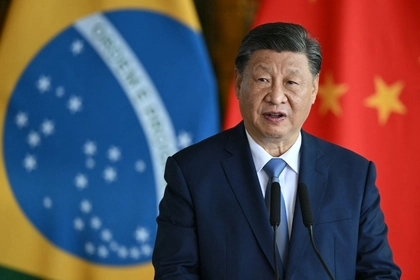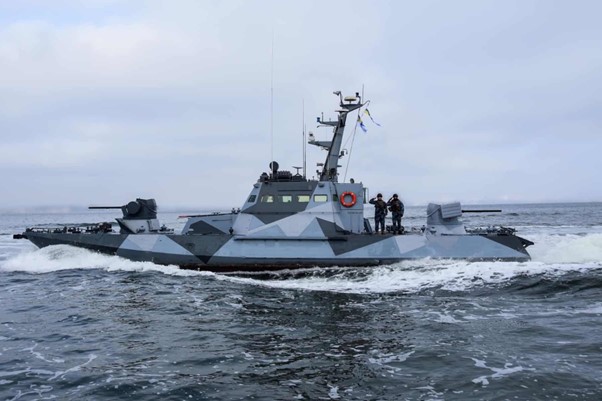Russian propaganda media praise the Su-57 aircraft, calling it the best fifth-generation fighter, which has no analogs in the world. However, observing their combat use in Ukraine, doubts arise about the correspondence of these statements to the true characteristics of the fighter.
The Su-57 was intended to be the successor to the MiG-29 and Su-27. The new aircraft was supposed to become a new stage in the development of Russian combat aviation and the first Russian fifth-generation fighter. Moscow planned to develop the project jointly with New Delhi, but in 2018 India withdrew from the agreement due to the non-compliance of the fighter’s characteristics and performance with fifth-generation aircraft standards.
JOIN US ON TELEGRAM
Follow our coverage of the war on the @Kyivpost_official.
According to the Indian side, the plane did not have a modern radar, avionics and did not meet stealth technology requirements.
The deadlines for delivery of the aircraft to the Russian Air Forcewere constantly delayed. Initially, it was planned to be initially operational in 2015, then the deadline was postponed to 2016, 2017, 2018... Only in 2020, the Russian Air Force accepted the first Su-57, while it started using the airplane during the war in Ukraine in 2022.
Su-57 vs F-22
Russian propaganda positions the Su-57 as the main competitor to the American F-22 Raptor, which can really be considered a fifth-generation aircraft. However, comparing the characteristics of these planes gives a clear idea of the real picture.

China Wants to See US, Russian Nuclear Disarmament Efforts Before Talks
Although the F-22 Raptor was developed much earlier (the program began in 1983, it entered service with the US Air Force in 2005), it is still ahead of the Su-57 in many characteristics.
It is important to note that the F-22 Raptor made its first flight in 1997 and was mass-produced for the US military from 2005 to 2011. The first Su-57 prototype made its flight in 2010. And, as mentioned earlier, the Russian Air Force received the planes only in 2020. When Russia was just starting to test its prototype, the United States had already curtailed F-22 production. Despite the significant difference in the years of creation, the F-22 is significantly superior to the Russian fifth-generation “analog.”
The situation with the Russian Su-57 is becoming increasingly interesting. It turns out that this aircraft, designed to become a symbol of the power of Russian aviation, has not yet been completed. One of the key points is the lack of its own engine that would meet the fifth-generation characteristics. Indian experts for some time hoped that the Russians would prepare a suitable engine. But, in the end, they realized that this is unlikely to happen soon.
Engine problems
According to the plan, the Su-57 was to receive a fundamentallynew engine - AL-51F1. The new engine was supposed to significantly improve the performance of the Su-57 compared to other Russian class 4+ fighters and bring the Su-57 closer to the fifth-generation standards. One of the key criteria for the fifth-generation fighters is the ability to fly at supersonic speeds without using afterburner. Currently, Su-57s are equipped with the AL-41F1 engine or its modification AL-41F1S, which were taken from the Su-35S aircraft.
The Russians declare a maximum speed of about 1,300-1,800 km/hwithout using afterburner, which seems to meet the requirements for fifth-generation fighters.
It is worth noting that the AL-41F1 and AL-41F1S engines, whichwere developed from the AL-41F, simply did not fit into the Su-57 airframe. Therefore, the new, smaller engines have less thrust: 15,000 kgf (33,100 lbs) against 18,000 kgf (39,700 lbs) in the AL-41F.
According to Russia, several Su-57s have already received new AL-51F1 engines. The Russian mass media immediately began to assure that the new engines allowed the plane to reach a maximum speed of 2,600 km/h and 2,100 km/h without using afterburner. However, in addition to speed and maneuverability, the use of stealth technologies is no less important for fifth-generation fighters. As it turns out, the Russian plane has problems here as well.
During the development of the F-22 Raptor, the Americans set themselves a clear task to make the aircraft as invisible as possible to enemy radars. The entire fuselage of the F-22 was designed taking into account the maximum dispersion of radio waves to prevent direct reflection of the signal and identification of the aircraft on the radar.
For this, at least 40 percent of composite and radio-absorbing materials are used in the design of the American aircraft. Carbon fiber is also widely used.
The nozzles of the F-22 engines do not have a classic round shape, but are made in the form of rectangular outputs, partially hidden in the fuselage. Studies have shown that this shape of the nozzles also has a beneficial effect on the infrared invisibility of the aircraft. The engine nozzles themselves were also made of radio-absorbing materials, using ceramics, which further reduces radar visibility.
When examining the Su-57, the round engine nozzles, not hidden in the airframe, immediately catch the eye. This significantly worsens its stealth indicators and infrared visibility. Most likely, the Russians simply do not have sufficient knowledge and technology to manufacture a new and better nozzle.
According to the chief designer of the Su-57, the mass of composite materials is 25 percent of the aircraft weight without fuel and ammunition, and radio-absorbing materials account for 70 percentof the area of the aircraft itself.
This situation raises serious doubts about the real capabilities of the Su-57. Ambitious claims about its exceptional performance and fifth-generation status pale in the face of incompleteness and failure to meet the key benchmarks.
Despite Russia’s claims that the Su-57 is "the best aircraft in the world," the Russian Federation managed to produce only about 15 such aircraft, and this is taking into account prototypes - in fact, the prototypes on which the viability of the entire system is tested. In contrast, the United States has produced 195 F-22 fighters and more than 1,000 F-35s of various modifications, which also belong to the fifth generation.
There are several reasons for this difference in production rates. First, the Su-57 is very expensive for the Russian Federation. This makes its mass production a financially challenging task for the Russian economy, which is already under the pressure of sanctions.
Secondly, there are doubts about the real combat capabilities of the Su-57. The plane may be "raw" and have serious design flaws that make it less effective than the Russians claim.
Su-57: "the airborne T-14 Armata," which they are afraid to lose
The so-called fifth-generation (de facto 4+) aircraft, promoted by the Russian mass media and propagandists, was repeatedly used for missile attacks on Ukraine. The Russians use the state-of-the-art fighter only to launch missiles from their own safe airspace. The Su-57 repeatedly launched Kh-59 and improved Kh-69 missiles over Ukraine. Any Su-24 front-line bomber developed in the 1960s successfully copes with this task.
The Russians do not use their “no-analog” aircraft in the fight against Ukrainian aviation or to perform tasks over the airspace of Ukraine, because they most likely realize that in such a case the Su-57 will be spotted and destroyed.
The reason for such caution is also the fear of losing this precious aircraft. The downing of the Su-57 by Ukrainian air defense systems would be not just a loss of a combat unit for Russia, but also a serious blow to the fighter’s image and declared combat capabilities.
The latest Russian weapons: from the T-14 Armata tank to the Su-57 fighter
Due to its high cost for Russia, the Su-57 has turned into a kind of "the airborne T-14 Armata" - an expensive and high-tech weapon that the Russian command does not dare to send to a real war.However, this is not typical for developers, who usually strive to test their equipment in real combat.
Apparently, the Russians themselves understand that the promoted Su-57 does not meet the fifth-generation fighter criteria and characteristics. Russia needs such equipment to imitate modernization of its military to the highest standards.
Perhaps, in addition to using the Su-57 for bombing Ukraine from a long distance, the Russians will use it for aerial parades over Red Square in Moscow in an attempt to impress foreign diplomats and military attachés. Although the use of Russia’s newest T-14 tank for such purposes was a fiasco: its engine shut down, and the crewfailed to start it again.
You can also highlight the text and press Ctrl + Enter










